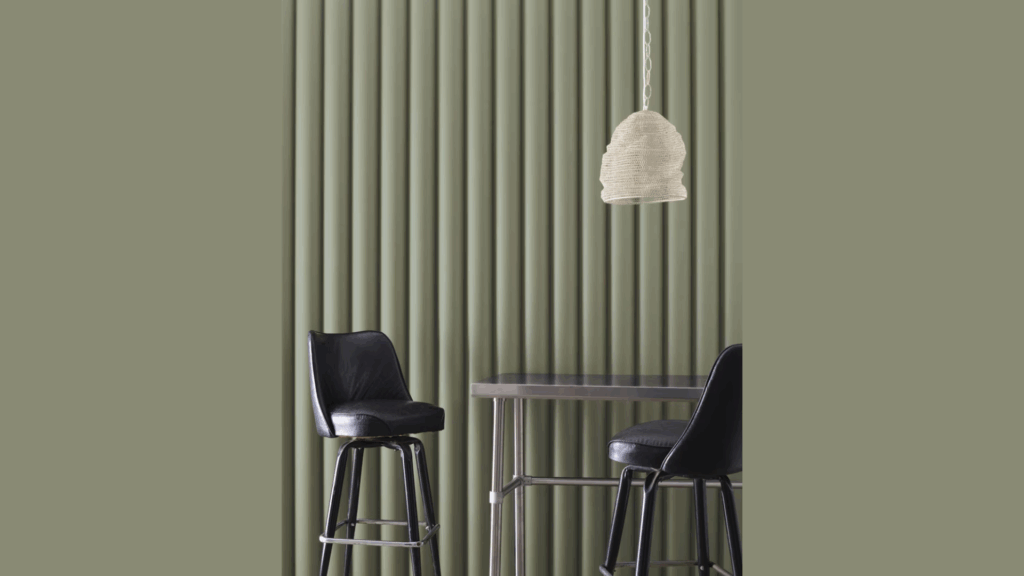Rolling Hills (1497) is a Benjamin Moore paint color. It’s also listed as CC-722 in some collections.
The color has a Light Reflectance Value (LRV) of 24.55, which means it reflects a low-to-moderate amount of light. It’s not too bright, but it doesn’t feel too dark either.
This shade is a quiet mix of green and gray. It works best in calm, relaxed spaces, such as bedrooms, reading corners, or cozy living rooms. Rolling Hills gives a grounded feel without being heavy or dull.
Rolling Hills looks like the color of wet earth after a soft rain. It’s green, but not bright. The gray tone in it keeps it smooth and natural. This mix makes it easy on the eyes.
What sets it apart from other greens is its balance. It has no harsh yellow or cool blue. It doesn’t feel too fresh or too dull. That’s why it fits well in many types of rooms and styles.
Why Rolling Hills Is an Ideal Paint Color for Any Room?

Rolling Hills has a balanced tone. It’s not too dark, so it won’t make a room feel small. But it’s not too light either. This middle ground makes it easy to use in different spaces, large or small, bright or shaded.
The color feels natural and steady. It doesn’t draw too much attention. Instead, it helps the room feel calm and settled. That makes it a good fit for everyday spaces like bedrooms, living rooms, or home offices.
Rolling Hills also works with many other colors. You can pair it with warm tones like tan, rust, or cream. Or you can match it with cooler shades like gray, white, or soft blue. It blends without clashing.
If you want a color that stays quiet in the background and helps the rest of the room shine, Rolling Hills is a smart pick.
Understanding the Subtle Undertones of Rolling Hills
Rolling Hills is made from a soft blend of green and gray. This mix gives it a calm, grounded feel. It doesn’t have strong yellow or blue tones, so it stays quiet and neutral.
In low light, the color can look deeper and moodier. It may appear more gray, especially in rooms with little natural light. This makes it a nice choice for cozy areas like reading nooks or bedrooms.
In daylight, the green comes forward. The color feels soft and earthy, like fresh moss or damp soil. It brings a touch of nature indoors without being bold.
This quiet shift in tone makes Rolling Hills a flexible option. It changes just enough to keep the space interesting, but it never feels harsh or loud.
Best Places to Use Rolling Hills in Your Home
Rolling Hills is soft, steady, and easy to use. Its green-gray mix makes it suitable for many rooms. The color feels calm but not dull. It works in bright spaces and areas with less light.
Bedrooms
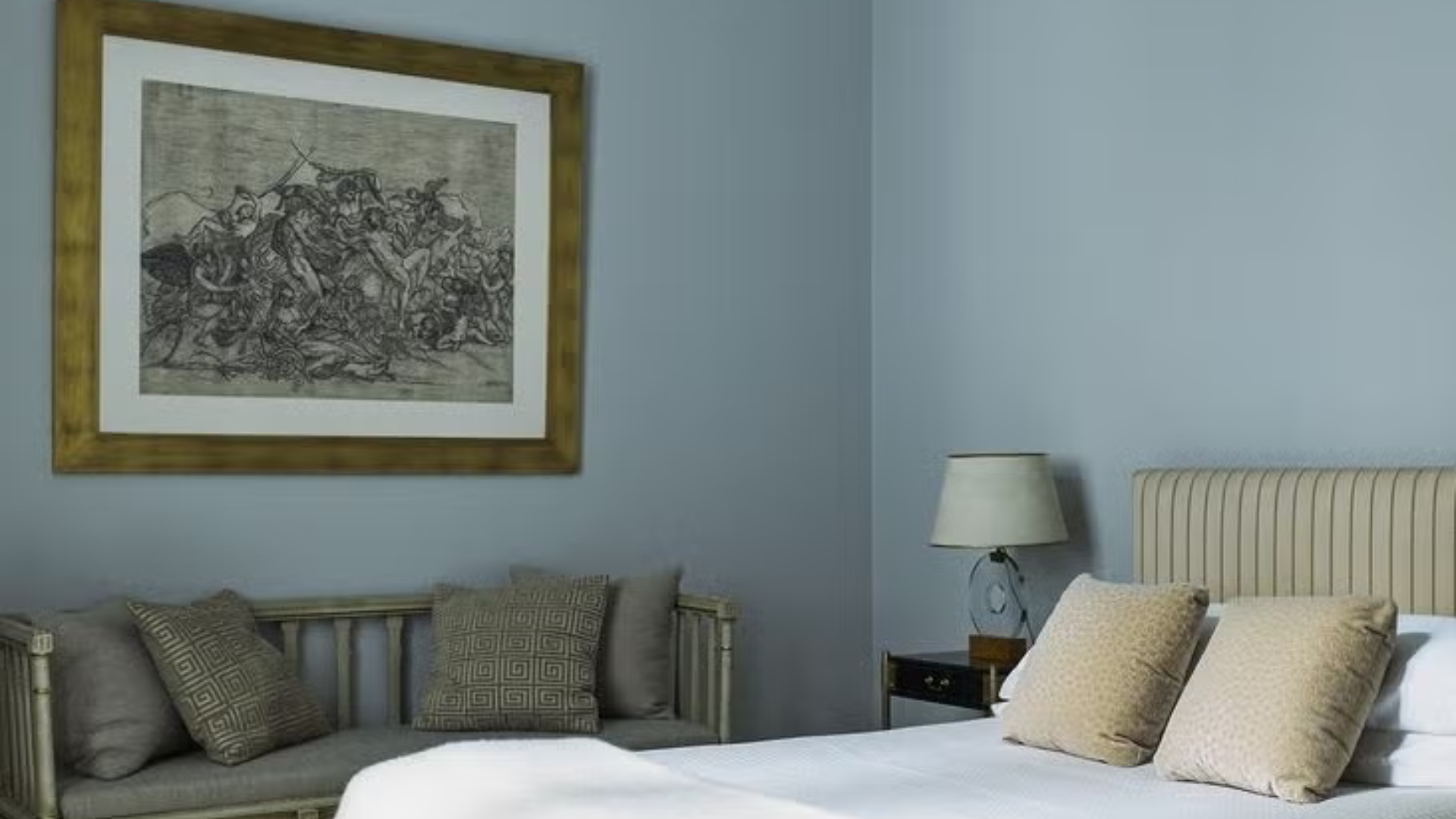
Rolling Hills is a strong choice for bedrooms. Its soft tone helps create a quiet, peaceful feel. The mix of green and gray brings comfort without being too warm or too cool. It works well with soft bedding, wooden furniture, or even black accents.
Living Rooms
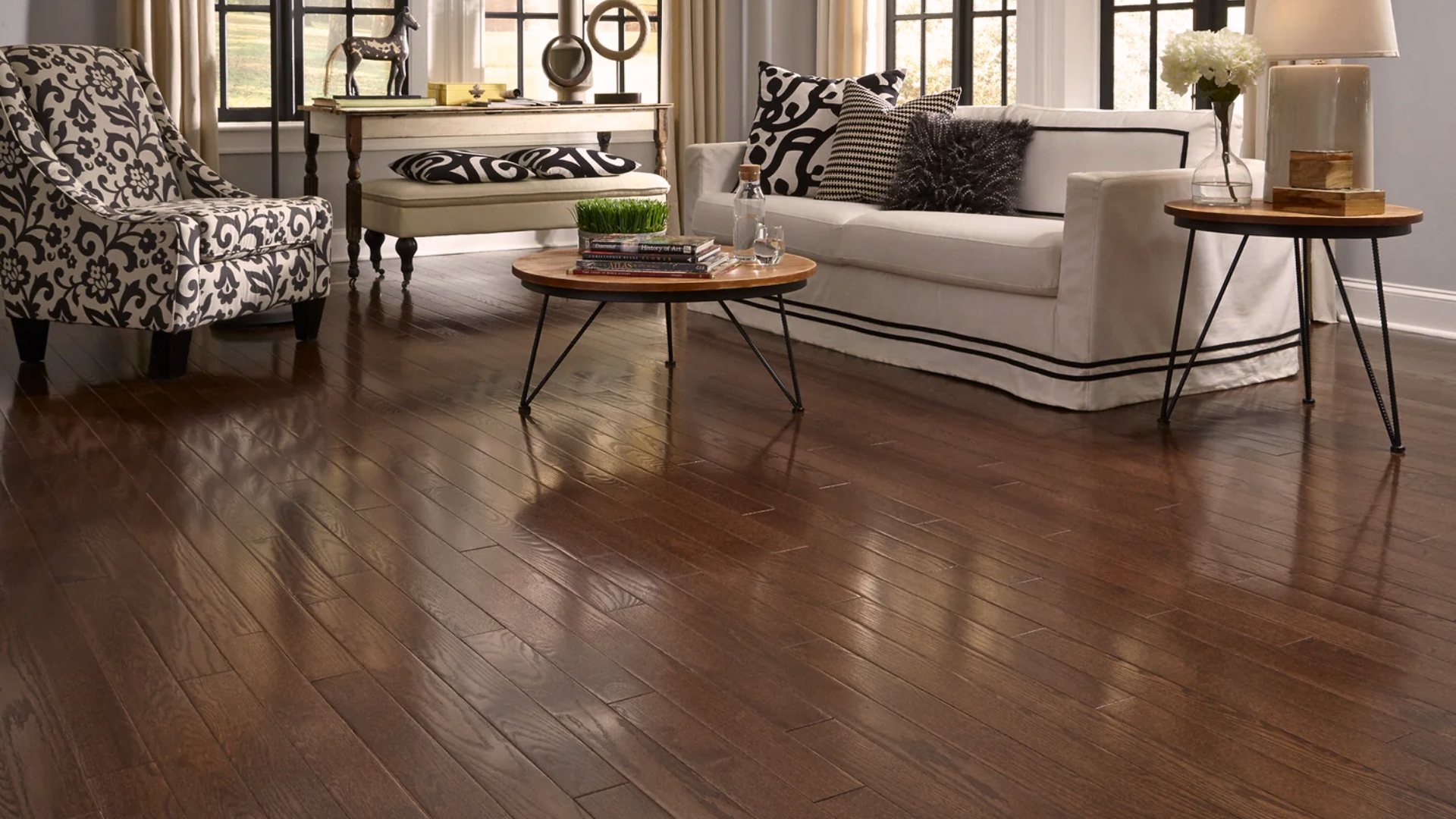
In living rooms, Rolling Hills adds a steady, grounded look. It’s a color that supports the space without trying to stand out. It works with many styles: modern, rustic, or classic. You can pair it with light wood, dark leather, or soft neutrals like cream and taupe.
Bathrooms
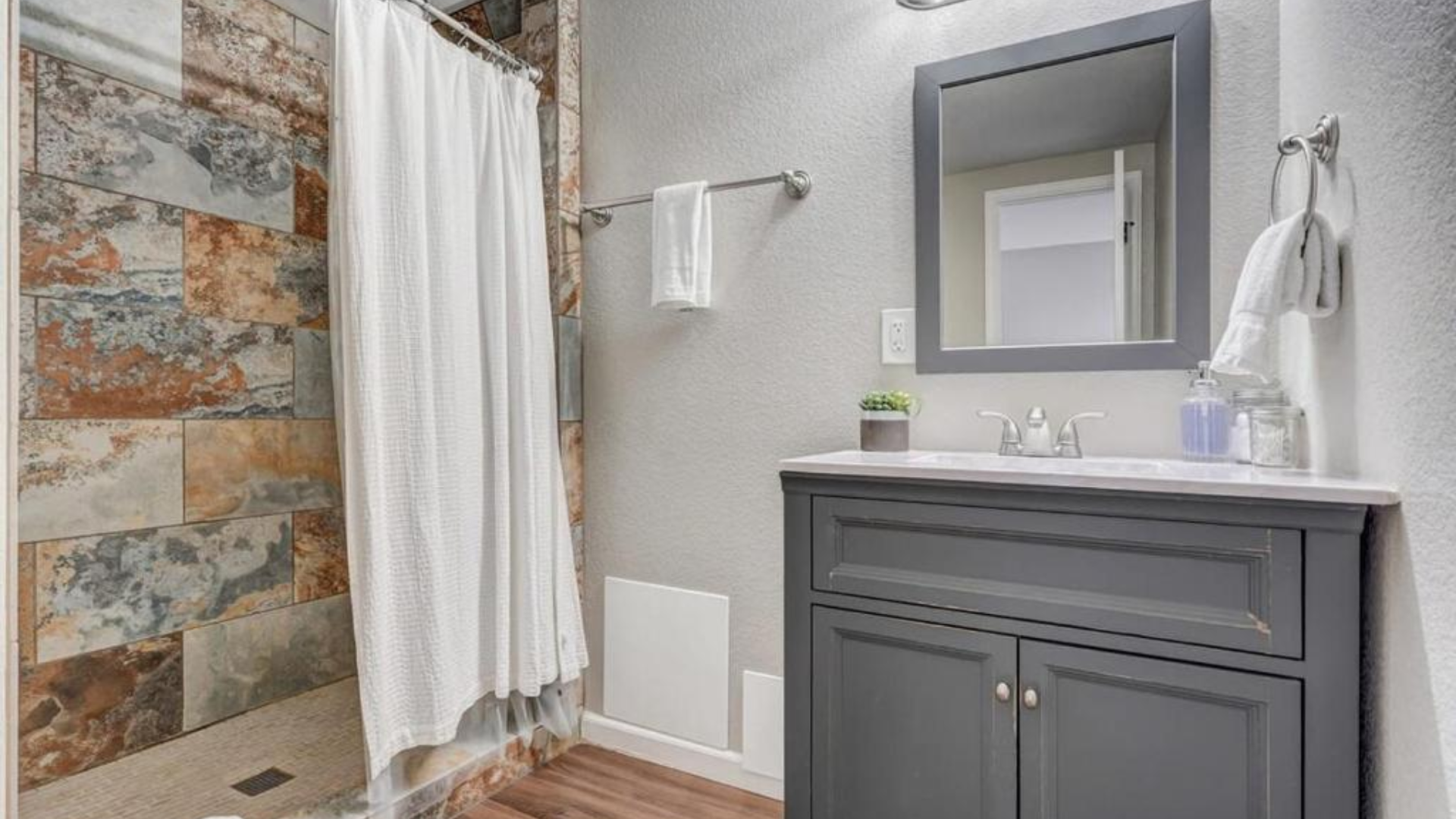
Rolling Hills brings a clean and natural mood to bathrooms. It pairs well with white tiles, brushed metal, and stone. The soft green-gray gives the space a spa-like feel without making it too cold. It’s also a nice change if you want something other than plain white but still want a light, fresh look.
Accent Walls
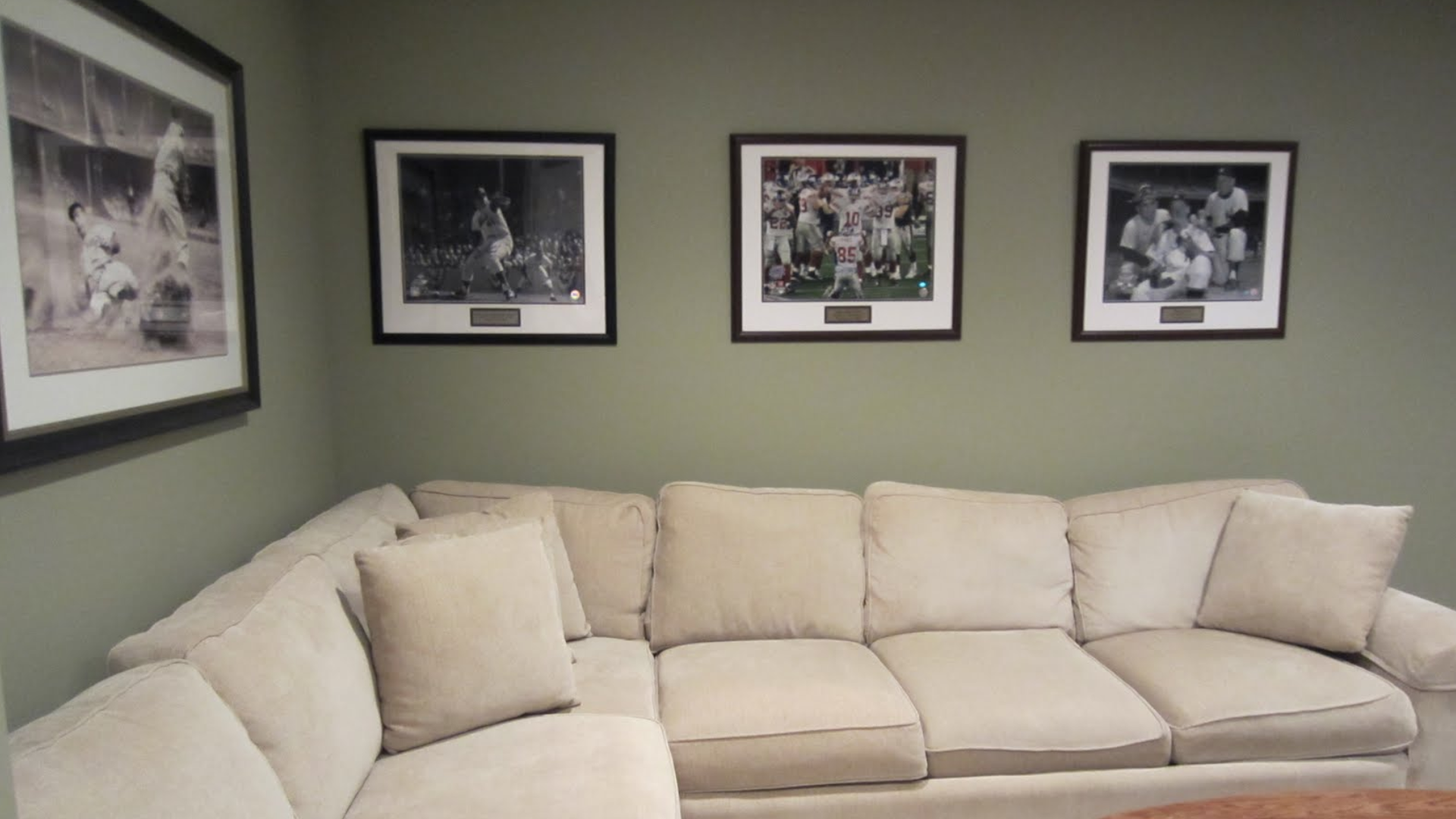
If you don’t want to paint the whole room, use Rolling Hills on just one wall. It works well behind beds, sofas, or in entryways. The color adds depth but doesn’t feel too dark. Because it blends easily with other shades, it won’t clash with your furniture or trim.
Flooring Options that Pair Beautifully with Rolling Hills
Rolling Hills is a grounded color, so it pairs well with natural-looking floors. The right flooring can help the color feel warm, cool, or balanced, depending on the look you want.
1. Light Oak or Ash Wood
Light wood floors work well with Rolling Hills. They keep the space feeling open and clean. The soft brown tones bring warmth that balances the cool green-gray. This combo is great for bedrooms, living rooms, or even hallways.
2. Soft Beige or Warm Tan Carpet
If you want something softer underfoot, beige or tan carpet is a good match. These gentle and warm colors add comfort and help Rolling Hills feel more grounded. This pairing works best in bedrooms and family rooms.
3. Pale Gray Tile
Pale gray tile is a smart pick for bathrooms, kitchens, or entryways. It adds a clean, cool look that works well with the green-gray walls. This mix feels fresh but not too sharp, keeping the space simple and easy to maintain.
4. Natural Stone or Textured Floors
Rolling Hills also looks good with natural materials like stone. The soft, earthy green blends nicely with rough textures. This works well in mudrooms, bathrooms, or kitchens, giving the room a quiet, outdoor feel.
Rolling Hills Compared to Other Warm Neutral Paints
Rolling Hills has a balanced tone. It’s not too dark, so it won’t make a room feel small. Let’s see how it stands next to other popular warm neutrals:
| Paint Characteristic | Rolling Hills | Other Warm Neutrals | Comparison Notes |
|---|---|---|---|
| Color Tone | Soft, muted greige with subtle warmth | Varied (beige, taupe, light brown) | Rolling Hills offers a more balanced middle ground |
| Mood Setting | Calming and versatile | Can feel flat or too warm | Creates a welcoming atmosphere without being overwhelming |
| Room Compatibility | Works in living rooms, bedrooms, and kitchens | Depends on the specific shade | Adapts easily to different spaces |
| Lighting Impact | Looks great in natural and artificial light | Some neutrals can look dull | Maintains a consistent appeal throughout the day |
| Complementary Colors | Pairs well with whites, woods, and earth tones | Varies by specific neutral | Provides more flexibility in decor |
| Psychological Effect | Provides a sense of comfort and neutrality | Can feel sterile or too bold | Strikes a perfect balance between interesting and calm |
Trim Colors that Go Well with Rolling Hills
Rolling Hills is soft and earthy. The right trim color can make it look even better. Trim helps frame the walls and bring the whole space together. With a color like Rolling Hills, you have a few good options.
- Soft White: Soft white trim gives a clean, simple look. It brightens the edges without clashing. This combo works well in bedrooms, living rooms, or any space where you want a light, easy feel.
- Warm Cream: Warm cream is a good match for a cozy finish. It adds just a bit of color, making the room feel softer. This trim works well in family rooms, kitchens, or areas with warm lighting.
- Light Gray: Light gray trim gives a smooth, modern touch. It blends with the gray in Rolling Hills but still offers a bit of contrast. This pairing fits best in more minimal or simple spaces.
- Matte Black: Matte black trim creates a strong contrast. It outlines the room clearly and makes the green-gray stand out more. This is a good option for accent walls, door frames, or bold, modern styles.
Conclusion
Rolling Hills is a calm, steady color that brings comfort to any space. Its soft mix of green and gray gives off a natural, grounded feel.
It’s not too dark or too light, which makes it easy to use in many rooms. The color feels quiet and settled without being dull.
This shade works well in rooms where you want to relax, such as bedrooms, living areas, or bathrooms. It’s also a good fit for accent walls or hallways. You don’t need to change your whole setup to use it.
Rolling Hills pairs nicely with light oak floors, stone tiles, beige carpets, or even brushed metal finishes. It easily fits into modern, rustic, or simple styles.
Because of its soft tone, Rolling Hills handles different lighting well. In bright spaces, it looks clean and fresh. In dim areas, it feels deeper and more grounded. This gives it a flexible look that changes just enough without ever feeling harsh.
If you’re looking for a color that adds depth without being bold, Rolling Hills is a smart choice. It’s soft, natural, and works almost anywhere in the home.

